-
Posts
6051 -
Joined
-
Days Won
1
Content Type
Profiles
Forums
Store
Downloads
Recruiting - 2020
2019-2020 Football Season
Football
Entertainment
Sports
News and Business
Cloak Room
Transfer Portal
Recruiting
Events
Posts posted by Viper
-
-
50 minutes ago, Soliver465 said:
I watch OTF on You Tube and do not get any inserts, just the reads.
This may be because I have YouTube TV but maybe not.
probably, I have youtube premium and never see ads.
-
22 minutes ago, Hornmatic said:
Who is this guy? I check the IT YouTube shows regularly and haven’t seen him once. But my buddies always send me his videos with Inside Texas all over it. Seems like his stuff is a regurgitation of reports from the regular IT staff.
He's a youtube guy doing UT and I think Dallas Cowboys stuff. Seemed to be hired by IT for a hot minute before the story was edited to remove him
Original On3 story:

Later edited story:

-
10 minutes ago, Duane Moore said:
I have seen this argument a couple of places and it doesn’t make a lot of sense to me. If I am an observer in Oman, or the UAE, or Iraq and I see Israel fire one missile that takes out the commander of the Quds Force and several other high ranking members, and Iran’s retaliation is to fire 300 drones, cruise, and ballistic missile that collectively only manages to injure a poor little Bedouin girl, who comes off looking like the strong horse in this exchange?
I tend to think that they really thought they would inflict some pain on Israel. If they didn’t, it seems like a miscalculation, a waste of a lot of their arsenal, and it gives Israel another causus belli to come back after them. If you’re going to break forty years of acting through proxies to do your dirty work, I would think you’d want a much better return on such a move.
It was absolutely an attempt to overwhelm Israeli defenses, I think they just didn't anticipate Jordan and SA helping down the missiles and drones too (who's help is probably the most encouraging sign here).
I've also seen it referenced here and elsewhere but Israel never bombed or attacked an Iranian consulate, I guess people don't read past the headlines anymore.
The real question now is does Israel respond. It probably should be what Jordan and SA will allow to keep them helping and not sitting out.
-
 5
5
-
-
Didn't Nahlin hire Landon at IT? Did he get let go or just find out it was an unpaid contributor situation?
-
damnit, I'm going to start preparing the mods for fallout 3 to play after I finish my Mass Effect paragon vanguard run.
-
 1
1
-
-
Timeline of the games and show
https://www.gamesradar.com/fallout-tv-show-timeline-what-year/
- Fallout 76 – 2102
- Fallout 1 – 2161
- Fallout 2 – 2241
- Fallout 3 – 2277
- Fallout: New Vegas – 2281
- Fallout 4 – 2287
- Fallout TV show – 2296
-
Bobby and Gerry interview Elijah
-
 1
1
-
-
14 hours ago, statsman said:
I’ve been subscribing to OTF and IT. Observations:
Their casts align fairly well:
Ringleader- Burton (OTF), Nahlin (IT). Burton is a more adept host. Who gives more information? Quicker? May be a matter of opinion.
Ex-player- Babers (OTF), Kelson (IT). Again, a matter of taste. Babers has radio experience, but Kelson has a ten times better speaking voice. Babers, I feel, has a need to fill empty space that Kelson doesn’t. I prefer Kelson; even though he is never asked to carry a show, he usually provides real insights as the talk comes to him.
Ex coach- Ervin (OTF), Shipley (OTF), Williams (IT). Frankly, I find none of them a must listen. I do enjoy Bobby talking with Ervin during the season.
Cub reporter- CJ Vogel (OTF), Joe Cook (IT). I find Cook a better listen. YMMVRecruiting Ace-Hamilton (OTF), Wells (IT). Hamilton seems to bring more, and has a better delivery. Wells? I get it. He’s a “dawg” and he’s from East Texas. Got it.
Does OTF have anyone like Boyd and Wadlington? I can’t find them, if they do. I like Boyd, when paired with Kelson or Wadlington. Wadlington pairs well with most everyone else. His “Everyone Gets a Trophy” podcast is a must listen, for me.
I think we’re lucky that we have both channels. I “subscribe” (Apple podcast- my $9.95 is IT) to both, and listen, primarily based on who is talking. If it’s CJ and Babers, I’m out. If it’s Wells and Williams, I’m out.Agree with some of this and disagree with some.
Nahlin and Burton, while both the owners/leaders of their respective companies, have completely different roles on streams. Bobby isn't perfect but he's a pretty decent host and facilitator and can bring tons of knowledge of the history of Texas sports and recruiting; no one's been doing it longer. Nahlin though isn't a host. He's very very stiff in front of the camera/mic, and talks fast with a monotone voice. You have to really concentrate on it to process what he's saying.
Agree on Wadlington, somehow he makes Boyd better.
I like Vogel and Cookj but Cook can be a little dry or quiet so a slight nod to Vogel, but then then I really don't understand why his twitter and TFB avatar looks almost nothing like him.
-
 1
1
-
-
So I've only played Fallout 1 and 2, and know some of the history, how much does playing Fallout 3 and 4 help with the show?
-
- Popular Post
- Popular Post
37 minutes ago, irishtexan said:I'm sure there are no helicopter parents at LSU.
Airboat parents, imo.
-
 5
5
-
 19
19
-
just ordered. any sort of synergy that we can expect between tree fiddy and muledick OTF members?
-
Maybe it's a different Tvondre Devarzia Sweat?
-
 1
1
-
 3
3
-
 1
1
-
-
What would the allowed use cases be?
-
I also use Nord and it's pretty great. You can get 3 months free on your order using a referral link
https://ref.nordvpn.com/zUQthRdXXtD
-
20 hours ago, Mittens said:
Not sure what thread this goes in because he's not really a $9.95er, but everyone's favorite is on strike.

-
On 4/3/2024 at 12:32 PM, freyguy said:
All of the sudden everything streaming in 4k/HDR or whatever. It's like I'm watching a soap opera...
It's not her or 4k, it's the refresh rate, look for settings like true motion, auto motion plus or something. Or look up your tv brand refresh rate setting name to find it
-
9 hours ago, SquishMitten said:
^^ Fair enough. Yes, they only show when you read an article, but since they open in the app, ad blockers that would work if I opened that same article through a browser don't get blocked. I assume that's because they're now "in-app" ads? Despite owning a tech company, I'm not particularly good with most tech. Apologies if my phrasing or assumptions are dumb.
basically your ad blockers work in your browser, but when you view a news article website through the autograph app you're essentially using the autograph web browser not your own. Now autograph could potentially add ad blockers to their web browser but I would think any of the sites they're partnering with would not appreciate that because it is taking ad money away from them.
-
10 minutes ago, SquishMitten said:
Finally getting around to exploring the app, and I really like the concept of it. Tons of content that interests me, but holy hell there are so many ads! Pop up ads at the top, pop up ads at the bottom, constant ads embedded in the articles as you scroll down. I understand that's how y'all make money, but gotdamn, it's mildly infuriating. I know there are several apps that block ads on webpages, but is there an in-app adblocker for IOS (specifically one that wasn't developed in China or Russia)? I've tried a few but haven't had any success.
I think those are just ads from the webpages the autograph app links to. I don't really notice any ads in the app itself (android)
-
3 hours ago, Born Burnt said:
I get that Tom Brady is a cofounder of the app, but if content of him continues to show up in my Texas feed, I'm deleting it.

-
I still don't like that splitting it int feast and dance messed up the naming of the books. Now the Dance of Dragons 2.0 is probably going to be in Winds of Winter.
There's (probably bullshit) speculation that the blue flower he posted on his blog means he's finished the book. It's probably something else but we'll see.
-
 1
1
-
-
also a study looking at the methods the official Gaza causualties are counted
Quoteeated debates over the Palestinian death toll in the Hamas-Israel war tend to focus on the fact that widely cited fatality numbers make no distinction between combatants and noncombatants. While this is true, it misses a more fundamental problem—the numbers themselves have lost any claim to validity.
In the first month of the war, the Hamas-controlled Ministry of Health (MOH) in Gaza relied on its existing collection system, made up primarily of hospitals and morgues, to certify each death. Starting in early November, however, hospitals in northern Gaza began to shut down or evacuate during the Israeli ground invasion, spurring the MOH to introduce a new, undefined methodology for counting fatalities: media reports. This methodology, which the MOH has rarely acknowledged publicly, accounts for the majority of fatalities reported over the past four months, surpassing the traditional collection system.
A comparison of the two methodologies, using MOH reports and claims published by the Hamas-controlled Government Media Office (GMO), yields wildly different and irreconcilable results, indicating that the media reports methodology is dramatically understating fatalities among adult males, the demographic most likely to be combatants. This undercuts the persistent claim that 72 percent of those killed in Gaza are women and children—a problem that has worsened since it was first noted by a Washington Institute report in January.
The result is that MOH statistics do not appear to offer a reliable guide to the actual Palestinian death toll even by the “foggy” standards of normal wartime reporting. Journalists, analysts, and government officials need to be aware that the actual overall death toll may be significantly higher (or, less likely, lower) than what the MOH has reported; the demographic composition of these fatalities is certainly far different than what the MOH claims.
Building a Database
To assess this problem, the author has assembled a comprehensive collection of publicly available Gaza fatality data that includes:
- Daily updates covering the period October 7 through March 21, obtained from four sources: the Hamas-run MOH in Gaza, the Hamas-run GMO, the Palestinian Authority Ministry of Health in Ramallah, and the UN Office for the Coordination of Humanitarian Affairs (OCHA) (which simply relays Gaza MOH/GMO claims, sometimes inaccurately).
- Compiled data from thirteen Health Sector Emergency Reports published by the Gaza MOH between December 11 and March 18 (these documents can be accessed via the MOH Telegram channel or the Internet Archive).
- Two comprehensive MOH data releases on October 26 and January 7 (the latter covering up to November 2 for all of Gaza and up to January 5 for the south).
The following analysis is based primarily on the Health Sector Emergency Reports and occasional GMO updates.
Download a condensed version of the author’s database (Excel).
(The full database with sources, methodology, and other information will be published on a future date.)
Limitations of Media Reports
The regular methodology used by the MOH (hereafter the “central collection system”) records deaths at hospitals and morgues, along with deaths reported by the Palestinian Red Crescent Society ambulance service and other unspecified sources (for a more detailed explanation of these practices, see the author’s January study). This methodology is well-understood and has been relatively accurate in the past.
Unlike in previous conflicts, however, neither OCHA nor local and international NGOs are currently conducting real-time fatality verification in Gaza or attempting to distinguish between civilians and combatants. Moreover, only a third of Gaza’s hospitals are even partially functional, and many parts of the Strip have serious access problems, curtailing the use of this methodology to count deaths outside of Rafah and Khan Yunis governorates.
On November 10, the MOH announced that it could no longer report deaths from two northern governorates; a month later, officials acknowledged that they were relying on what they called “reliable media sources” to report deaths in those areas. In reality, they had begun using this methodology as early as November 3, according to the MOH dataset released on January 7.
To be sure, it is not uncommon to use news reports when attempting to count deaths in chaotic battlespaces with access issues and damaged institutions. Yet this practice is notoriously difficult and typically looks backward rather than attempting a real-time count. The reliability of any such effort is greatly dependent on its methodological details, but the MOH has refused to elaborate on how it collects this data—a major problem given that media reports have become the dominant input in the Gaza death toll, accounting for more than 14,000 reported fatalities.

Comparing the Methodologies
Despite known problems with the MOH central collection system (outlined in more detail in the author’s January study), it is the more reliable methodology because it involves identity verification and counting of actual bodies. Media reports, by contrast, are much more difficult to verify, regularly lack details necessary to determine the identities or disposition of those killed, and may double-count or miss many fatalities. The divergence between the two methodologies is perhaps best shown by how differently they have reported demographic details about Gaza deaths.
For instance, the MOH Health Sector Emergency Reports provide separate data on men, women, and children when their deaths are recorded through the central collection system, but only a single aggregated figure for deaths gleaned from media reports. When these reports coincide with the GMO’s periodic reports (which provide demographic breakdowns), one can compare how they treat fatalities among different demographic groups.

This comparison reveals sharp differences—most notably, a sixfold decrease in adult male fatalities recorded from media reports and a fourfold increase in child fatalities. (For reference, children make up roughly 50% of Gaza’s population, and men and women make up a quarter each.) Some of these differences may be explained by the fact that media reports are unlikely to capture combatant deaths accurately due to access issues and fear of retribution for exposing Hamas losses. In most cases, however, the numbers are too far apart to be reconcilable, or too divorced from the realities on the ground to be credible.
For example, according to the media reports methodology, only 1,192 men had been killed in northern and central Gaza as of March 18, despite four and a half months of heavy ground fighting (see the author’s condensed database). Five days later, that number inexplicably decreased to 1,170—a feat that would have required 22 men to somehow come back to life by March 23 in order to reconcile the central collection system data with the overall claim. In contrast, Israeli authorities estimate that 13,000 militants have been killed—a figure that may incorporate many combatant deaths not recorded by either MOH methodology.
Without clarification from the MOH, such findings suggest significant omission or manipulation aimed at understating the number of men killed and overstating the number of children killed. One possibility is that fatalities among militants—most of whom are men—are more likely to go unreported because they occur in tunnels or on battlefields, where most reporters are either unable to access bodies or unwilling to risk Hamas retribution or the dangers of combat zones. Another possibility is active manipulation—that is, using the media reports methodology as a smokescreen for altering the data in support of the claim that 72% of those killed are women and children.
Meanwhile, data from the central collection system indicates a sharp decrease in overall deaths since November and a sustained increase in the proportion of men killed.


In addition to the MOH’s growing reliance on the media reports methodology, these trends may reflect various factors on the ground, such as Israel’s shift from a primarily air-based campaign to ground fighting, the mass evacuation of civilians from the north to Rafah governorate, and the decreasing intensity of fighting in areas where the central collection system is still functioning. Such factors would be expected to reduce overall civilian casualties and therefore increase the proportion of adult men killed, since that is the demographic most likely to serve as combatants.
Caveats and Recommendations
This analysis is solely intended to compare various Hamas fatality claims against each other and raise questions about the resultant discrepancies. It makes no claims about the true death toll in Gaza or the civilian-combatant ratio, nor is it meant to distract from the very real and widespread loss of life in Gaza and the severe humanitarian crisis that its population continues to suffer.
Regarding the overrepresentation of men in the fatality statistics, this point is not intended to imply that all Gazan men are militants. Rather, adult men are the most likely to be militants across any group (though Hamas is known to use children in combat and support roles). Their overrepresentation has also been used to help estimate militant deaths in the past.
Caveats aside, the above findings should prompt analysts, media outlets, and government officials to bear the following points in mind when assessing Gaza fatality statistics:
- The discrepancies between the methodologies for counting fatalities warrant much more intense scrutiny and should be paired with appropriate caveats if cited. Whether through passive omission, active manipulation, or both, the Gaza Health Ministry’s media reports methodology significantly understates the number of men killed and may overstate the number of children killed.
- The repeated claim that 72% of the dead are women and children is very likely incorrect. Data from the central collection system indicates that 58% of those killed since the start of the war are women and children; this figure drops to 48% for those killed since November 3. For the 72% claim to be accurate, women and children would have to make up about 90% of deaths recorded from media reports. This proportion is implausible—men comprise a quarter of the population, and these fatalities have largely occurred in areas with fewer civilians and more combatants, most of whom are adult men.
- Data from both methodologies suggests that the war has decreased in intensity. Fatalities have declined from an average of 348 per day in the first weeks of the war to around 85 per day in March.
- The existing data is too limited to allow for definitive conclusions about the true death toll or the civilian-combatant ratio. A high proportion of reported deaths come from an unknown methodology that may be misrepresenting the data, while enormous uncertainty persists regarding how many combatant fatalities go uncounted in tunnels and other battlespaces. The exact proportions of men, women, and children killed are even more unclear. The available data does not allow for reliable estimates about the ratio of civilians to combatants killed either, whether independently or by comparison with Israeli estimates.
Gabriel Epstein is a research assistant in The Washington Institute’s Koret Project on Arab-Israel Relations.

-
Good news, food prices are dropping in Gaza
-
1 hour ago, 4th&Five said:
He was a regular on Deadwood.
which was 20 years ago
-
The reports of Israeli rapes at Al-Shifa were made-up. This isn't actually surprising considering the IDF has been criticized for not sexually assaulting Palestinian prisoners, I guess it's a little surprising that the refutation has come from Hamas.
What's more interesting is why the IDF is back at Al Shifa hospital in the first place. For some reason it looks like hundreds of Hamas and PIJ fighters returned to the hospital along with several high ranking members that are being captured. I've seen speculation that there was anticipation of a ceasefire and Hamas sent these fighters back up north to prepare to retake control of the area during the ceasefire, but I think that's just all just conjecture.
QuoteThe IDF said that Islamic Jihad operatives holed up at the medical center surrendered to troops, including Hussam Salameh, the commander of PIJ’s observation and intelligence unit in Gaza City, and his brother, Wissam Salameh, head of the terror group’s propaganda unit in Gaza City. In an evening press conference, IDF Spokesman Rear Adm. Daniel Hagari detailed additional senior PIJ operatives who were captured by troops at Shifa, including the commander of the terror group’s Shejaiya Battalion, the deputy commander of PIJ’s Northern Gaza Brigade, and a PIJ commander charged with the terror group’s tunnels in northern Gaza. Also captured at Shifa were three senior officers in Hamas’s so-called West Bank headquarters, which is tasked with advancing attacks against Israel from the West Bank, the army said. The Shin Bet named them as Amr Asida, the head of the Nablus unit; Mahmoud Qawasmeh, one of the planners of the 2014 kidnapping and murder of three Israeli teens; and Hamdallah Hassan Ali, who was also involved in directing recent attacks in the West Bank. Hagari said there were additional “very significant” senior Hamas commanders who were captured by troops at Shifa, but that their identities could not immediately be disclosed due to their ongoing interrogations.
-
 1
1
-






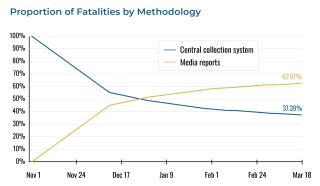
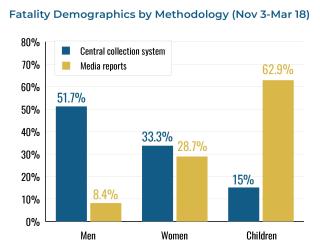
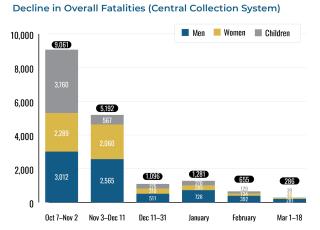
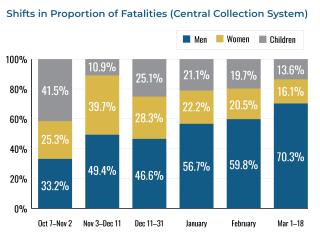
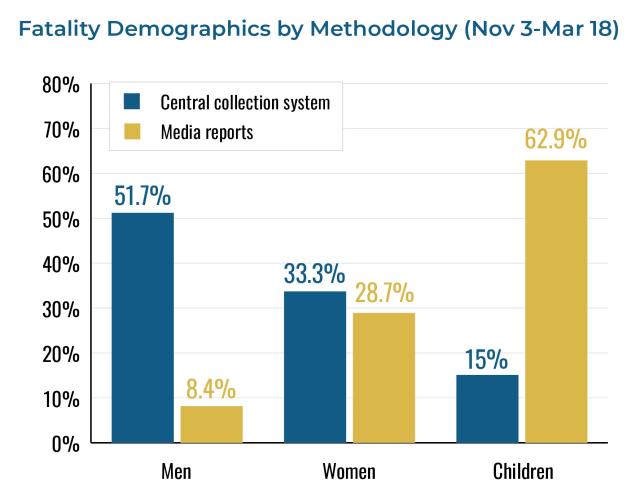
Fallout (TV Show) - Amazon prime
in Movies and TV
Posted
Bethesda added some Fallout tvshow characters to their mobile game, so you can see their SPECIAL stats
https://kotaku.com/fallout-show-amazon-prime-character-special-stats-lucy-1851411135